The Turkish-born, LA-based media artist and director Refik Anadol is renowned for his use of artificial intelligence to explore the concept of the human memory, creating meditative data sculptures through cutting-edge technology.
MASH Founder Shalini Passi had a chat with the artist about his work in New Media, his experiments with AI, and what it means to be a human in the 21st century.
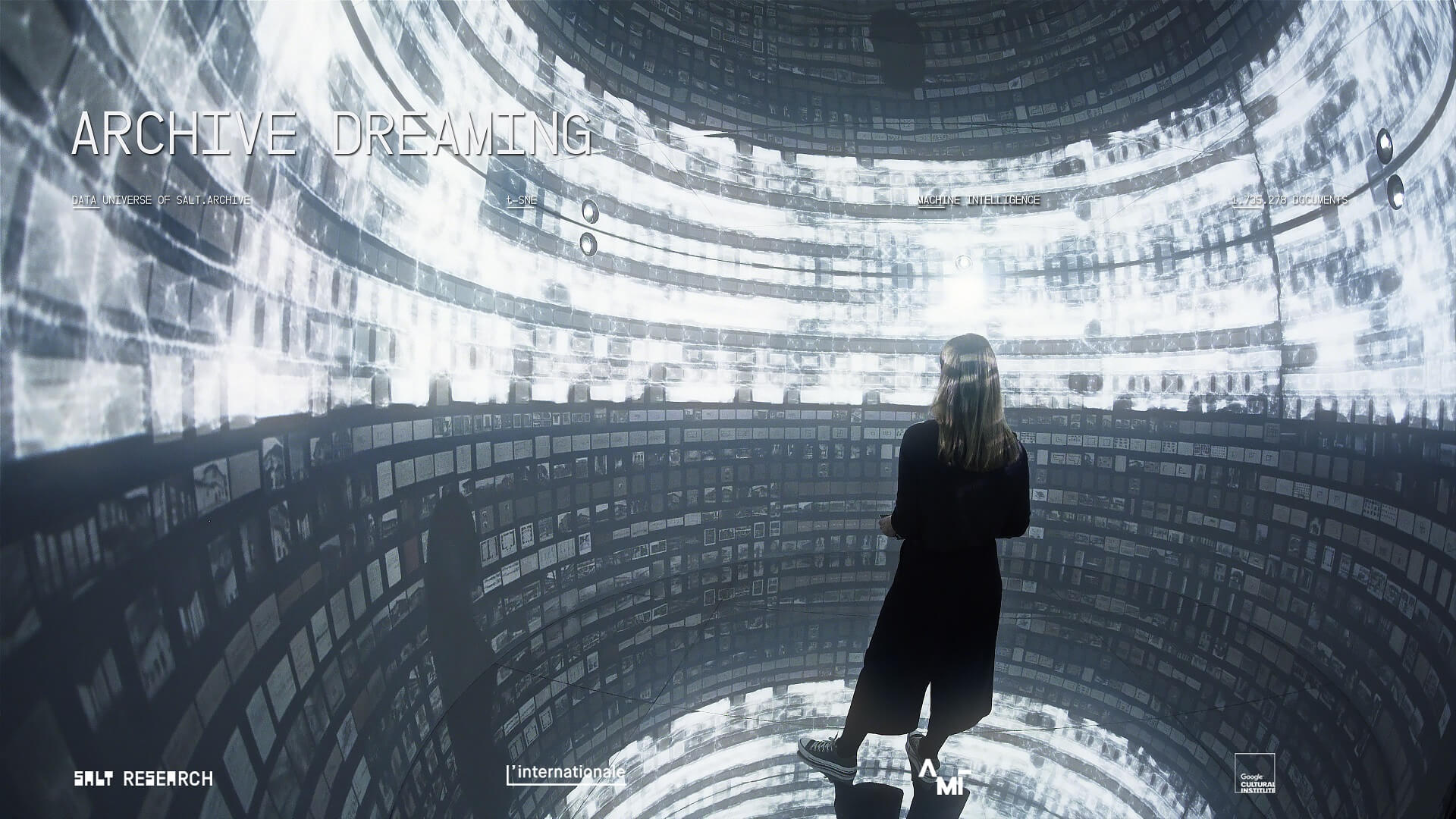
Refik Anadol, Archive Dreaming, 2017
You’ve been called a pioneer in the aesthetics of machine learning; how did you come to work at this exciting intersection of art and technology?
My journey with machine learning started almost three years ago with a collaboration with Google as an artist in residence with the Artists and Machine Intelligence team. The project Archive Dreaming was my first ever opportunity to create an artwork using machine intelligence. Archive Dreaming was one of the first artworks in the world truly created by using machine learning algorithms – the machine learned from 1.7 million documents and created invisible structures hidden inside its mechanical mind. That project allowed me to understand several unique algorithms used in AI research. As an artist, I was fascinated by how these algorithms could profoundly change humanity’s destiny. And so, inspiration turned into this exciting journey and truly helped me understand how to make this invisible world visible.
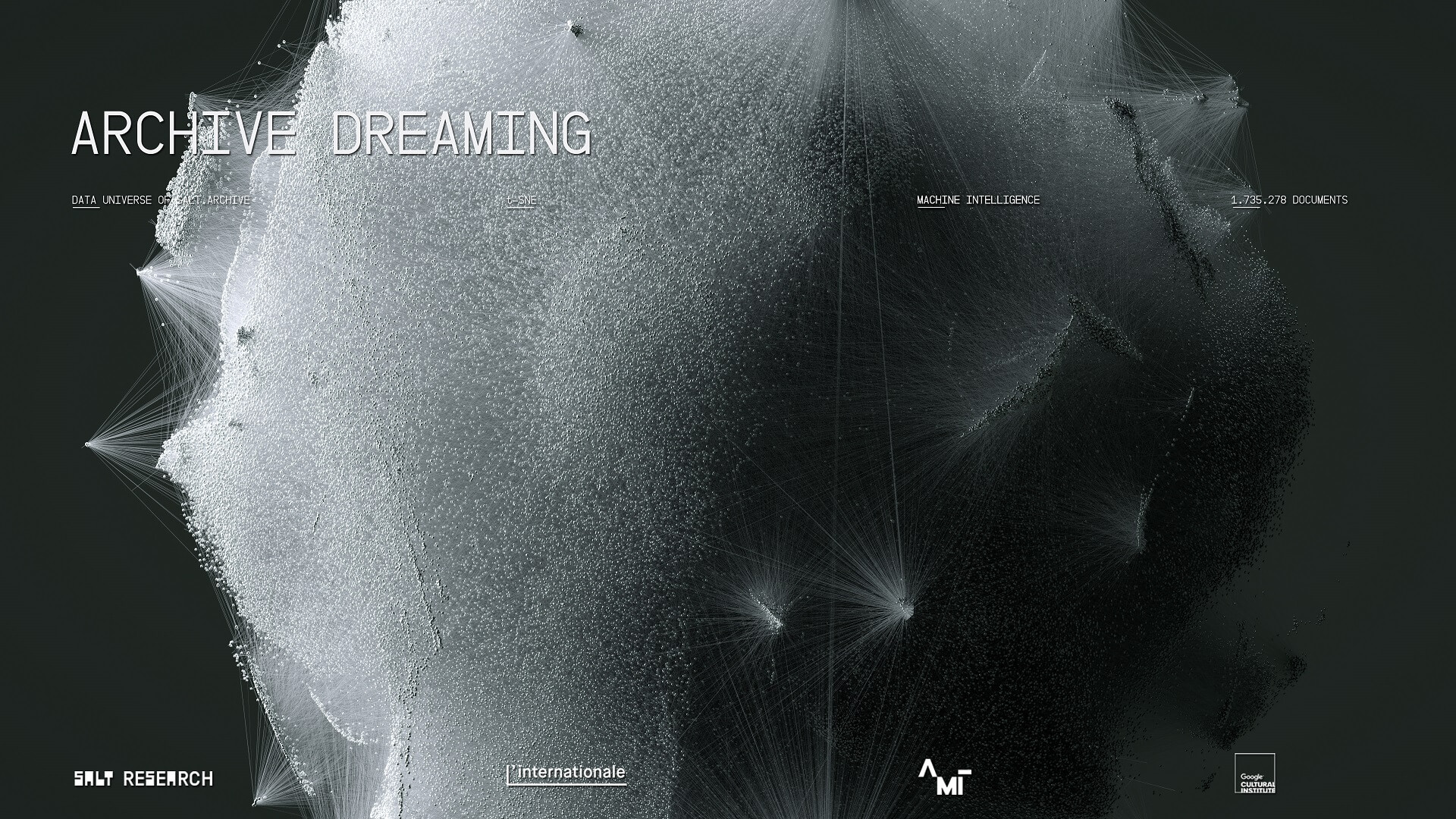
Refik Anadol, Archive Dreaming, 2017
I understand that you’ve just opened your latest installation Machine Hallucination at Artechouse – New York’s first dedicated space for New Media Art. Can you tell us a little bit about this piece and how it fits into your wider body of work?
Machine Hallucination is pretty much where my research ends. As I said, with Archive Dreaming, I was able to augment a library and create a physical environment – a built environment – where people can witness this speculative near-future experience where a machine learns in front of a human and then offers a new dimension that doesn’t exist in real life. Later on, with Melting Memories, I was able to recognise the moment of remembering as data, and transform it into a three-dimensional data sculpture.
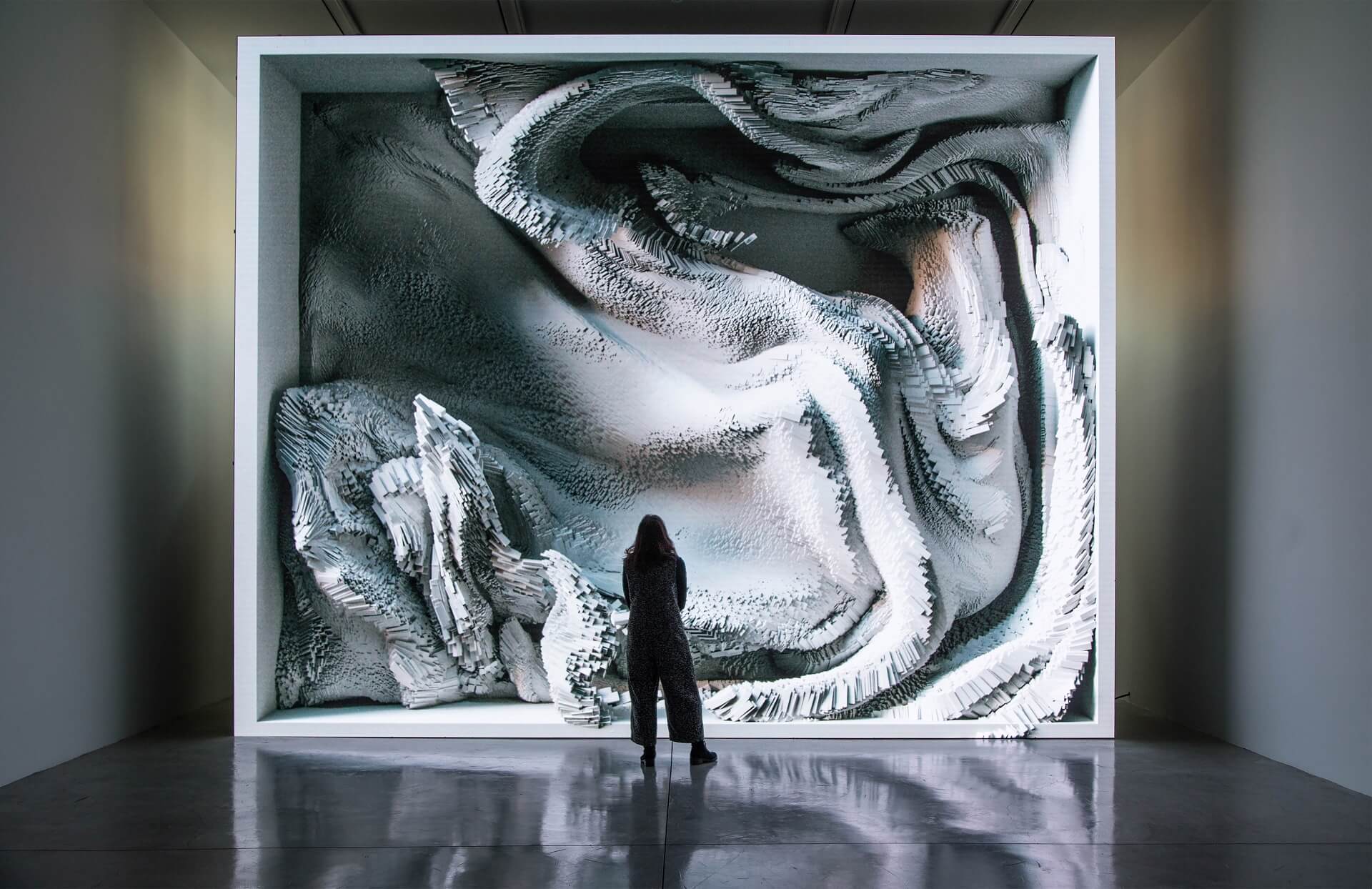
Refik Anadol, Melting Memories, 2017
And, then, with WDCH Dreams, I was able to let Frank Gehry’s Walt Disney Concert Hall literally dream, by using the entire archive of the LA Phil’s 100 years of memories, mixed with the last 15 years of every single digital memory of the building itself.
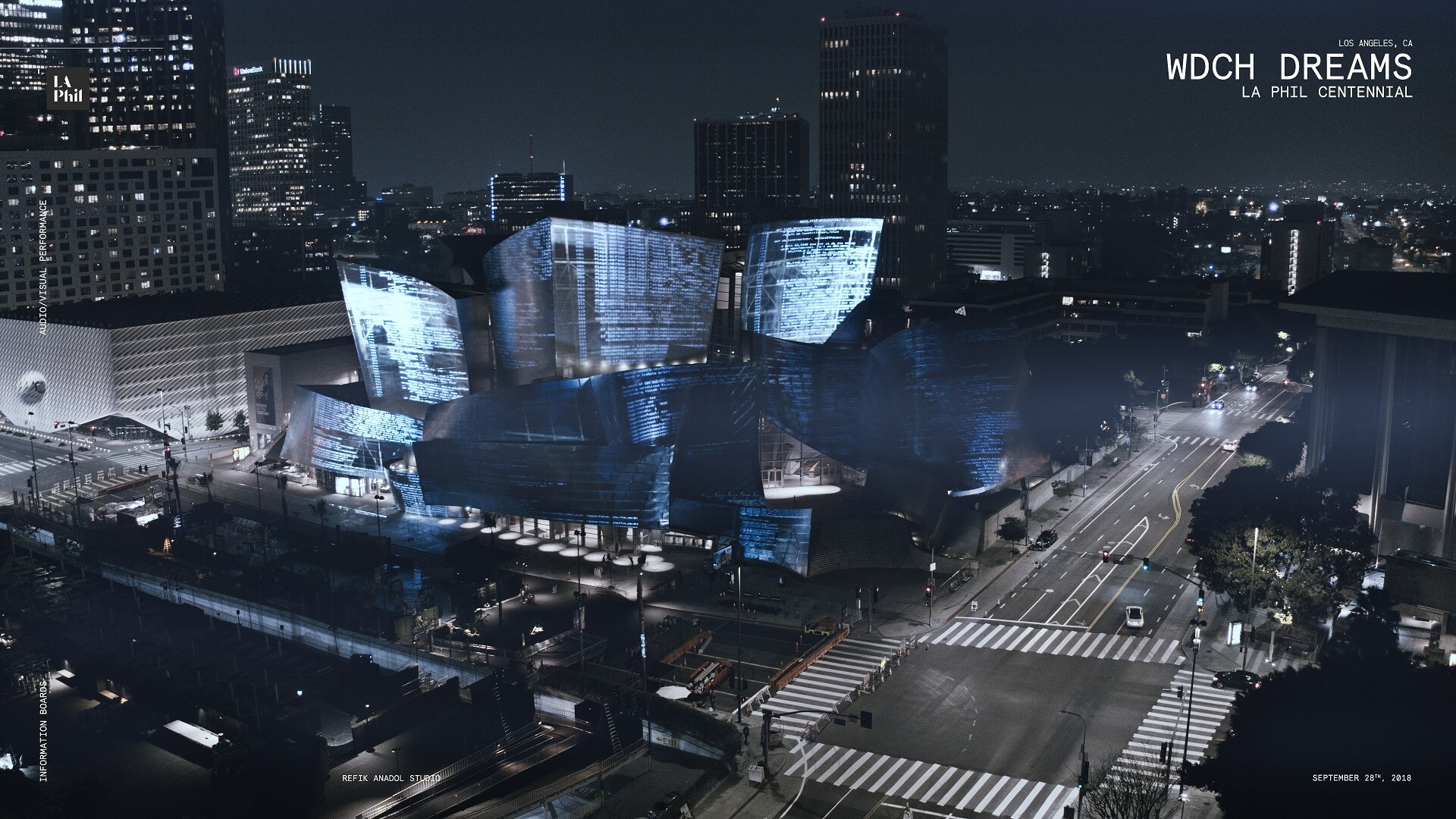
Refik Anadol, WDCH Dreams, 2018
So, Machine Hallucination is basically the fourth edition of this journey. I’m referring to it more like synaesthetic architecture because I strongly believe that the artwork is not only creating a spectacle by using an incredible amount of technology, but it also tries to speculate a new storytelling approach, a 21st century cinema.We are literally witnessing a machine download 300 million images of New York, then classify and find people and erase the photos with anything personal in it, which only leaves us the raw New York as a public and urban experience. Then, I let the machine truly learn from this data and create and dream for us.
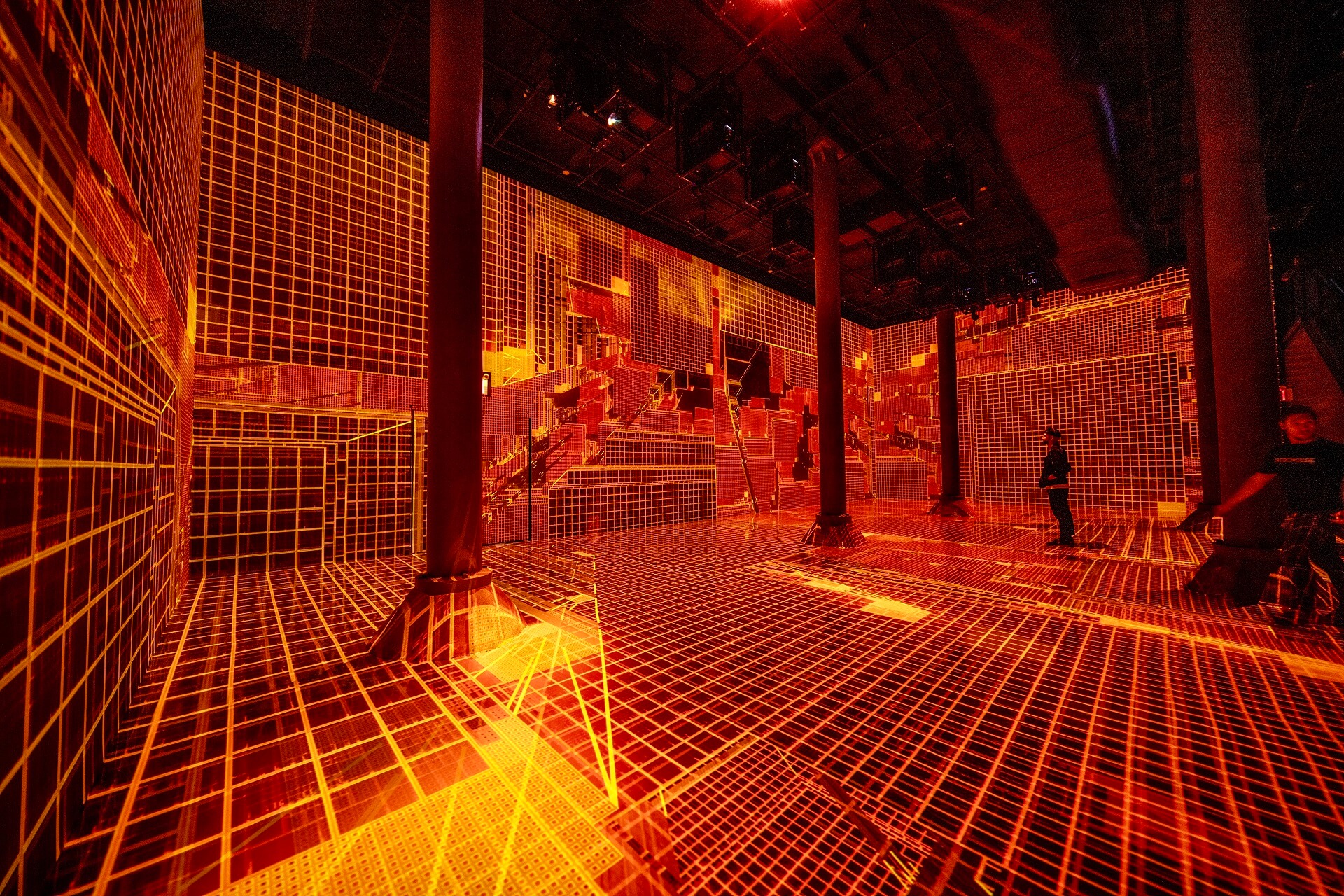
Refik Anadol, Machine Hallucination, 2019
So far, people are enjoying the journey immensely. People are sending hundreds of messages every single day with images from the experience. I think we found something very fresh and I believe this will be one of the first, pioneering pieces of art that truly recognises machine intelligence as a collaborator.
Refik Anadol, Machine Hallucination, 2019
The practice of New Media Art is continuously changing and evolving due to rapid advances in technology; how do you think this affects the way in which it is understood and accepted as an artistic medium?
I’ve been using media arts in my practice for almost a decade now. What I’ve learned in the journey is the idea of using a machine as a collaborator, using algorithms and data as a kind of substance, is pretty much the same as when I started. The only big advantage right now is computational power. Machines are becoming so much more powerful and the tools that are invented are becoming more accessible, and open source, allowing artists like me to go beyond our capacity. And, I think this capacity is becoming much more exciting with AI because right now we are literally becoming the writers of writers for AI.
Refik Anadol, WDCH Dreams, 2018
Your work presents viewers with a dramatic rethinking of the physical world, through time and space; can you talk about how these experiments with artificial intelligence relate to the human experience of memory and our imagining of the future?
A big question for me is, what does it mean to be a human in the 21st century? And to be honest, to give an answer to this question, there is no way to ignore the technology in our lives. This technology is not just like the machines we are holding every day, but also the world inside those machines. Clearly the social networks, and our decisions, and our memories are sucked in by these black boxes. Every decision we are making, or we are getting from the machine actually becomes our memories. I am optimistic that in this invisible world of communication and entire connectedness of humanity, AI has the most vital role, because AI here, is creating a meaning between our memories.
Refik Anadol, Melting Memories, 2017
I think we have an incredible number of computational tools. We also have an enormous amount of saved data. We have to be extremely careful and extremely purposeful to truly make an experience from this leftover data with machine intelligence. I believe, in our work we will see many more dreams and memories as a concept and truly combine physical and virtual worlds to create a fresh time and space perception of the near-future.
What are you working on next; do you plan to produce anything in India?
Right now we have fourteen projects of varying scale – mostly data paintings and data sculptures and public performances – in Asia, America and Europe. I would love to make a project in India. I am in love with how deep Indian culture is, how old Indian culture is for humanity, and I’m dying for the opportunity to create a piece truly inspired by Indian culture.
Find out more about Refik Anadol and his works on refikanadol.com





